In 1842 the area of Sacco
Pastore, today in Rome's neighborhood Montesacro,
saw the arrival by river and transport on the Via Nomentana road
of the two granite obelisks, today rising in Villa Torlonia public
park, located a few kilometers ahead.
Prince Alessandro Torlonia
(1800-1886)
decided to commemorate
his parents, Giovanni
Raimondo and Anna Maria
Schulteiss, dedicating them two obelisks, to be installed
in the family villa on the Via Nomentana, set up by the famous
architect Giuseppe Valadier for his
father.
Following the taste of the time and his personal inclination,
Torlonia wanted to imitate the Egyptian obelisks, a typical feature
of Rome urban landscape, making engrave on them imitated hieroglyphics,
and using the pink granite from
the quarries of Baveno, on lake
Maggiore, today in the province of Verbania and at that time belonging
to the kingdom of Sardinia, because it was more alike than other
stones to the granite used by the Egyptians.
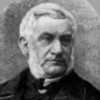






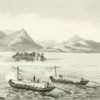
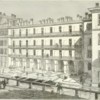
From
Baveno to Venice
In the spring
of 1839 the coarse obelisks were transported from the quarry to
the town of Baveno, on the shores of Lake Maggiore, on a 3.7 km
(2.3 mi) track; owing to the lack of roads they were made slide
on a floor of wooden boards and beams, down to two flat-bottomed
boats. From there a sailing began, initially on the lake
until Sesto Calende, then on Ticino river and on Naviglio grande
canal, down to Milan, after 98.1 km (61 mi), where the obelisks
were finished by the stonemason Antonio Nicola Pirovano, in his
studio on Martesana canal.
In Milan, the obelisks were taken on board again, sailed on Naviglio
Pavese canal, again on the Ticino and then on the Po, passing
through Piacenza, Cremona, Guastalla, Pontelagoscuro Cavanella
Po and then, through various canals, the Adige and the Brenta
river, reached Brondolo di Chioggia and finally sailed by the
lagoon to Venice, after a navigation
of more than 600 km
from the quarry from which they came.
The transportation by sea was committed to Papal Navy captain
Alessandro Cialdi, from
Civitavecchia, who chose in the port of his city the "Fortunato",
a lugger (a two-masted boat, named in Italian trabaccolo
or pielago) that reached Venice after 42 days at sea, on
August 15th, 1839, while the barges with
the obelisks had reached Venice Arsenal only five days before.
Captain Cialdi, then in his early thirties, as well as an able
seaman, was also a naval engineer, able to set up the ship so
to warrant a stable and safe navigation, even carrying a very
special load. He then made adjust the lugger's hold, under the
direction of Francesco di Giovanni, a shipwright from Civitavecchia,
removing the deck, so that the obelisks could be placed. On August
29th, in Venice Arsenal the transfer
operations from the barges to the lugger began, which lasted
about three hours, using five capstans, two hundred and fifty
workers and a dense crowd of onlookers to witness.
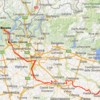

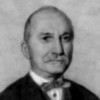
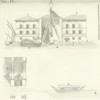

From
Venice to Villa Torlonia
On September 5th, the Fortunato set out
from Venice, sailed along the Dalmatian coast, then was forced
to take shelter from a storm in the port of Durrës, today
in Albania, then it coasted Apulia and Calabria, passed through
the Strait of Messina and on October 2nd reached Fiumicino, from where
it was pulled by water buffaloes until the fluvial harbour of
San Paolo in Rome, where it was admired by many onlookers, including
Pope Gregory XVI, who wanted
to get on board.
Then the problem of how to carry the obelisks to the villa arose:
the idea of a journey by land was discarded, for the high risk
of accidents, the inconvenience to the city of Rome during the
transit, and for the risk of not being able to pass through bridges
or arches met on the way, not to mention the slow pace of the
transfer, while the prince Torlonia urged a quick delivery.
Prince Torlonia then accepted the Cialdi proposal of a further
waterways trip, along the Tiber River until the confluence of
Aniene and then on the latter until a meander
of the Aniene, named Sacco
Pastore, the closest landing place to Villa Torlonia, and
in any case downstream of Nomentano
bridge. The ship was pulled by buffaloes in the rural areas,
and by men within the city, where the passage was accompanied
by great popular curiosity, facilitated by the fact that the embankments
along the river had not yet been built, and many Romans could
see the passage of Fortunato just looking out the window
of their house.
The tricky issue of unloading was solved by choosing to pull
the lugger out of the water by a slipway and transport it
by land with the obelisks on board. The procedure of pulling
out the boat occurred on December 26th,
1839, by five capstans, in the presence of Prince Torlonia, who
had disposed to set up pavilions for himself and his illustrious
guests, and several onlookers, who had attracted hawkers in huts
set up for the occasion.
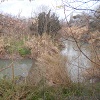
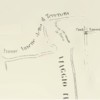

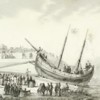
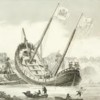

One hundred and thirty
men pulled the Fortunato out of the water in 25 minutes,
between salvos of cannons and music of bands. The boat, with its
scaffolding for ground transport, started its trip towards Villa
Torlonia, over Sacco Pastore quarry,
where ninety years later two skulls of Neanderthal men will be
found (see page).
The passage over the quarry was considered dangerous because of
the risk of collapse under the weight of the ship and its load,
but the technicians hired by Torlonia had correctly evaluated
the route, which stood on the pillars of the quarry, avoiding
to encumber the vaults.
After eight days of travel, the first three of which passed to
get out from Sacco Pastore area, the boat entered Villa Torlonia
on January 9th, 1840, after a 2,880 km (1,790
mi) journey, of which only the last four by land. The arrival
was celebrated even by salvos of cannon and marching bands and
a cheering crowd in the presence of distinguished guests, including
Maria Cristina
of Bourbon-Naples widow of King Charles Felix of Sardinia.
Captain Cialdi was much appreciated for how he had done his job
and in September of the same year he was entrusted with the transport,
along the Nile, of alabaster columns donated to the Pope by the
Viceroy of Egypt, who reached Rome
on the mistico (a ship with different sorts of sails) "La
Fedeltà" on August 16th, 1841. The columns were intended
to the reconstruction of St. Paul Outside the Walls basilica,
destroyed in 1823 by a fire.
The
hieroglyphs
Once the final destination was reached, the engraving of the hieroglyphs
started, based on texts written by the Barnabite Father Luigi
Maria Ungarelli from Bologna (1779-1845), an egyptologist
expert in hieroglyphics, who had collaborated with Jean
François Champollion. The carvers could refer to the
casts of the hieroglyphics of the original Egyptian obelisks of
San Giovanni and Piazza
del Popolo, in order to imitate their style. The work took place
on the lugger "Fortunato" whose sides had been
disassembled. When a side was carved, the obelisks were rotated
outwards, to expose a new side to sculpt, until the last rotation
made them find out of the boat.

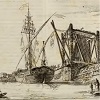
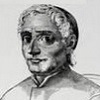

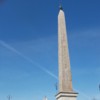
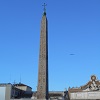


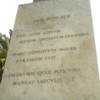

The text engraved on the
obelisk dedicated to Giovanni
Raimondo Torlonia (the one facing the entrance of Via Nomentana)
translated in English reads: "Alessandro Torlonia Duke
of Ceri made cut from the quarry in Baveno Simplon two noble obelisks.
/ This obelisk is dedicated by Alessandro the Prince of Civitella
Cesi to his father Giovanni former Duke of Bracciano, in order
to perpetuate his name in the fatherland. / on the year 1842,
on 28th, month of Mesori, when the carved
obelisk in pink granite was raised overlooking the north facing
gate."
The obelisk dedicated to Anna
Maria Torlonia bears this text: "The son of the Duke
of Bracciano has graced the edifice of his father (the Villa)
has built sumptuous houses, bright as the sun, for the perpetuity
of the days. / With singular munificence has Duke Alessandro Torlonia
made two obelisks navigate from Ticino to Rome. / Be this monolith
named as the obelisk of late Duchess Anna Maria Torlonia, that
as a declaration of reverence made his son sculpt. / The year
1842 months Thòot day 23rd, the obelisk was erected overlooking
the south facing gate: may this be for countless days."
The dates of raising, 23rd April and 28th
May, do not correspond with the real ones because they were estimated
not predicting any setbacks, that instead occurred and delayed
the emplacement of the obelisks.
In order to enable understanding the texts, Alessandro Torlonia
made carve the Latin translation of them on the travertine
bases of the obelisks; the translation was done by Monsignor
Gabriele Laureani
(1788-1850), general
guardian of the Academy of Arcadia, and the first keeper of the
Vatican Library.
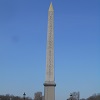
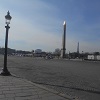
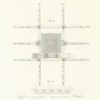
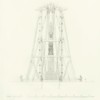
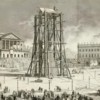
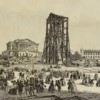

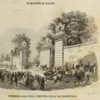
The
raising of the obelisks
At the beginning of April 1842 the engraving of the hieroglyphs
was completed, and the planning of the raising of the obelisks
on their pedestals was enacted. Several projects were examined
and discarded, including that presented by Paolo Emilio Provincial,
major of the engineer corps, inspired to the method used for Luxor Obelisk, set down in Egypt
and raised in Place de la Concorde,
in Paris. Eventually the project
of young Sir Nicola Carnevali, architect of Metastasio theater
in Campo Marzio, was chosen.
The first obelisk, the one dedicated to Giovanni Raimondo, was
raised in the afternoon of June 4th,
by one hundred and ninety men, including sixteen gunners that
operated eight winches, at the
drum roll and in the presence of seven thousand spectators.
Strada Pia, now Via XX Settembre and via
Nomentana, for the occasion were blocked by a crowd of pedestrians
and coaches, among them that of Pope Gregory XVI, who would not
miss the event, together with the Bavarian King Ludwig
I and three cardinals, including the mighty Secretary of State
Luigi Lambruschini.
In about half an hour the obelisk was brought vertically over
the pedestal, to be hinged on it, but a heavy shower forced to
suspend the operation, in order to seek a shelter. On this occasion,
the Pope had the time to visit the Casino Nobile, the Torlonia
palace inside the Villa. No sooner could be the raising resumed
than after sunset, by torchlight, and after changing the ropes,
which were soaked in water and then useless. At last the work
was completed between fireworks, firing of firecrackers, balloon
launch and music from different bands. The obelisk dedicated to
Anna Maria Torlonia was raised on its pedestal
on July 26th, 1842.


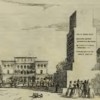
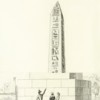
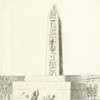
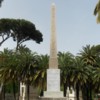
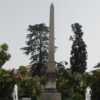
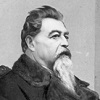
The
obelisks
The two obelisks
are located in front of the two facades of the Casino Nobile:
the one dedicated to Giovanni Raimondo
Torlonia is located in front of the main facade, facing the gate
of via Nomentana, while the one dedicated
to Anna Maria Torlonia is located in front of the rear facade.
The obelisks are 10.277 meters (33.717 ft) tall, of which the
shaft measures 9.980 m (32.743 ft) and the pyramid-shaped apex
(pyramidion) 0.297 m (0.974 ft); the four sides to the
base measure 1.117m (3.665 ft) and the four sides on the top are
0.670 m (2.198 ft) long. The volume is 8.51 cubic meters (300.528
sq ft) and the mass is 22.187 tonnes (21,836 long tons).
Alessandro
Torlonia
The client of
the obelisks, Prince Alessandro Torlonia, enjoyed an immense wealth,
due among other things to the Monopoly of salt, granted to him
under contract, with exclusivity of trade and collection of the
tax, which had yielded enormous earnings. The deputy of the Roman
Republic Candido Augusto
Vecchi, advocate of the abolition of the monopoly, wrote of
Alessandro Torlonia "A man born of low seed, buyer by
dint of gold of nobility, of titles, of knightly insignia, who
placed his coat of arms everywhere, on the palaces, on the villas,
on the haylofts, on the fountains, on the interiors and exteriors
of his houses, on the tapestries and elsewhere, so that his friends,
his people and the people would believe that his ancestors had
brandished spears and swords for the saint conquered instead of
the hoe and the plow"
[from: VECCHI Candido Augusto. Le vicende della Repubblica
romana narrate dal rappresentante del popolo Candido Augusto Vecchi.
Quattrini, Firenze 1911] (Natalini).
BIBLIOGRAPHY
DIONIGI
ORFEI Enrica (1840) Anna Maria Duchessa Torlonia. L’album,
Giornale letterario e di Belle Arti, VII, 41, 12 dicembre
1840, 321-323.
GASPARONI Francesco (1842) Sugli obelischi Torlonia nella Villa
Nomentana. Tipografia Salviucci, Roma.
MAZIO Paolo (1842) Il Quattro di Giugno. L’album,
Giornale letterario e di Belle Arti, IX, 18, 2 luglio 1842,
137-143.
NATALINI Guglielmo (2000) Storia della Repubblica romana del Quarantanove.
U. Magnanti, Nettuno.
RAVIOLI Camillo (1842) Quarto ed ultimo rapporto della spedizione
romana in Egitto. L’album, Giornale letterario e di
Belle Arti, IX, 2, 12 marzo 1842, 9-16.

 page
created: June
27th, 2015 and last updated:
March
1st, 2023
page
created: June
27th, 2015 and last updated:
March
1st, 2023